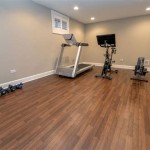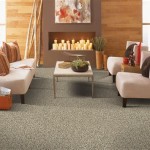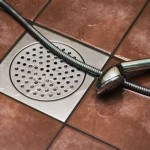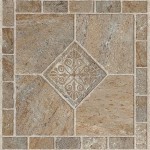How Much Does A Hardwood Floor Cost?
Determining the cost of hardwood flooring is a complex process influenced by numerous factors, ranging from the type of wood chosen to the intricacies of the installation process. Understanding these factors is crucial for homeowners seeking to budget accurately and make informed decisions about this significant home improvement project. This article provides a comprehensive overview of the elements that contribute to the overall expense of hardwood flooring.
Hardwood floors offer a timeless aesthetic appeal, durability, and potential to increase a home's value. Unlike some floor coverings, hardwood provides a natural warmth and can be refinished multiple times, extending its lifespan significantly. However, this premium option also comes with a higher price tag compared to materials like laminate, vinyl, or carpet. The initial investment requires careful consideration of both material costs and installation charges.
Key Factors Influencing Hardwood Flooring Costs
Several core aspects directly impact the overall cost of a new hardwood floor. These include the type of wood, the grade of the wood, the construction method (solid versus engineered), the square footage of the area to be covered, and the complexity of the installation.
Type of Wood: The species of wood is the most significant factor determining the price. Common options include oak, maple, hickory, and cherry, each with individual characteristics and price points. Oak, particularly red oak, is generally considered a cost-effective choice due to its abundance and versatility. Maple tends to be slightly more expensive than oak because of its density and finer grain. Hickory offers exceptional durability and a distinctive rustic look, often commanding a higher price. Exotic hardwoods like Brazilian cherry (jatoba), mahogany, or bamboo floorings can be significantly more costly than domestic options due to sourcing and import expenses, and their unique visual characteristics. The hardness of the wood, measured by the Janka hardness scale, also plays a role; harder woods are more resistant to dents and scratches and often, but not always, come at a premium.
Grade of Wood: Hardwood lumber is graded based on its appearance, including the presence of knots, color variations, and other natural characteristics. Higher grades, such as "select" or "clear" grades, feature fewer imperfections and offer a more uniform appearance, resulting in a higher price. Lower grades, like "common" or "rustic" grades, showcase more knots and color variation, providing a more natural and character-rich look at a potentially lower cost. The grade chosen depends on the desired aesthetic and budget considerations.
Solid vs. Engineered Hardwood: Solid hardwood flooring consists of planks milled from a single piece of wood. Engineered hardwood, on the other hand, is constructed from multiple layers of wood, with a thin veneer of hardwood bonded to a core of plywood or high-density fiberboard (HDF). Solid hardwood is typically more expensive initially, due to the higher material costs. However, it can be refinished multiple times, potentially extending its lifespan considerably. Engineered hardwood offers greater stability and resistance to moisture and temperature fluctuations, making it suitable for installation in basements or over concrete slabs. While it can sometimes be refinished, the number of times is limited by the thickness of the veneer. Engineered hardwood can be a more budget-friendly option, particularly for specific installation environments.
Square Footage: The size of the area to be covered is a direct determinant of the amount of material required and, consequently, the overall cost. Larger areas require more hardwood and necessitate more labor hours for installation. Accurate measurements are crucial for obtaining accurate cost estimates. Waste factors, typically ranging from 5% to 10% depending on the complexity of the room layout, should also be considered when calculating the required material.
Installation Complexity: The intricacy of the installation process significantly affects labor costs. Simple, rectangular rooms are generally quicker and easier to install than spaces with intricate patterns, multiple corners, or existing obstacles such as stairs or built-in cabinetry. Subfloor preparation also plays a significant role. If the existing subfloor is uneven or damaged, additional work may be required to level or repair it before installing the hardwood, adding to the overall expense. Installation methods, such as nail-down, glue-down, or floating, can also influence the labor costs, with more complex methods requiring skilled professionals and more time.
Breaking Down the Cost Components
Understanding the individual cost components provides a clearer picture of where the investment is allocated. These components include the cost of materials (hardwood flooring itself), the cost of installation labor, and any ancillary expenses such as subfloor preparation, removal of existing flooring, and finishing costs.
Material Costs: The cost of the hardwood flooring itself can vary significantly depending on the factors outlined above. Basic, unfinished solid oak flooring might range from $3 to $7 per square foot. More premium options, such as exotic hardwoods or prefinished engineered flooring, can easily exceed $10 or even $15 per square foot. Prefinished flooring generally costs more than unfinished flooring but can save on labor costs since finishing is not required on site.
Installation Labor Costs: Labor costs for hardwood floor installation typically range from $3 to $8 per square foot, depending on the region, the complexity of the job, and the installer's experience. Complex patterns, such as herringbone or parquet, can significantly increase labor costs due to the additional time and skill required. Removal of existing flooring can also add to the labor cost, typically ranging from $1 to $3 per square foot, depending on the type of flooring being removed and the difficulty of the removal process.
Ancillary Expenses: Additional expenses can add to the overall project cost. Subfloor preparation, including leveling or repairing the existing subfloor, can range from $1 to $5 per square foot, depending on the extent of the required work. Underlayment, which provides a moisture barrier and sound insulation, typically costs between $0.50 and $2 per square foot. Moldings and transitions, used to create a seamless transition between the hardwood floor and other flooring surfaces, can add a few hundred dollars to the total cost, depending on the size and complexity of the project. Finishing costs, including sanding, staining, and applying a protective finish, can range from $1 to $4 per square foot for unfinished flooring.
Budgeting and Cost-Saving Strategies
Effective budgeting and implementing cost-saving strategies are crucial for homeowners seeking to manage hardwood flooring expenses. Careful planning, material selection, and strategic timing can help minimize costs without compromising the desired aesthetic or quality.
Obtain Multiple Quotes: Requesting quotes from multiple flooring contractors is essential for comparing prices and ensuring a competitive rate. Provide contractors with accurate measurements and detailed specifications to ensure accurate and comparable quotes. Be sure to ask contractors about their experience, qualifications, and insurance coverage.
Consider Alternative Materials: If budget is a primary concern, explore alternative flooring materials that mimic the look of hardwood at a lower cost. Laminate flooring and luxury vinyl plank (LVP) flooring offer similar aesthetics to hardwood but are typically more affordable. However, it's important to weigh the pros and cons of each material, considering factors such as durability, maintenance requirements, and resale value.
Choose Cost-Effective Wood Species: Opting for more readily available and less expensive wood species, such as oak or maple, can significantly reduce material costs. These woods offer a classic look and good durability at a more affordable price point than exotic hardwoods. Consider the grade of the wood as well; a lower grade with more character might be acceptable depending on the desired look.
DIY Demolition and Preparation: Homeowners can potentially save on labor costs by handling the demolition and removal of existing flooring themselves. However, it's important to consider the time and effort involved, as well as any potential hazards associated with the demolition process. Proper disposal of the old flooring materials is also essential. Subfloor preparation can also be handled by the homeowner, provided they have the necessary skills and tools. However, it's crucial to ensure that the subfloor is properly leveled and prepared before installing the new hardwood flooring to prevent future problems.
Time the Purchase Strategically: Flooring retailers often offer seasonal sales and promotions, particularly during off-peak seasons like late winter or early summer. Timing the purchase strategically can potentially save a significant amount of money. Consider signing up for email newsletters and following retailers on social media to stay informed about upcoming sales and promotions.
Negotiate Pricing: Don't hesitate to negotiate pricing with flooring contractors and retailers. Inquire about potential discounts or special offers. Paying with cash may sometimes result in a lower price. It's also worth asking about any potential cost savings by purchasing materials in bulk.
The cost of hardwood flooring represents a significant investment in a home. Understanding the factors that influence the price, from the choice of wood to the complexities of installation, provides homeowners with the knowledge needed to make informed decisions. By carefully considering these elements and implementing cost-saving strategies, homeowners can achieve the desired aesthetic and durability within their budget.

Average Hardwood Flooring Prices In 2024 Forbes Home

Hardwood Flooring Cost 2024 Per Square Foot Mk

How Much Does Hardwood Flooring Cost 2024 Guide

Hardwood Flooring Installation Costs 2024

How Much Does It Cost To Buy Install Hardwood Floors Discount Flooring Blog

Cost To Install Hardwood Floors The Home

How Much Does It Cost To Install Wide Plank Floors Floor Supply

Cost To Remove Hardwood Floors Mk Remodeling

Here S How Much Hardwood Flooring Costs In 2024 Angi

How Much Does Wooden Floor Installation Cost In 2024 Mybuilder








